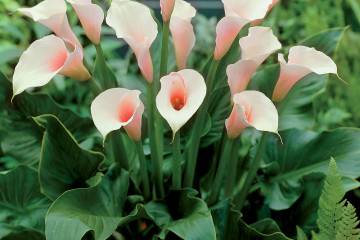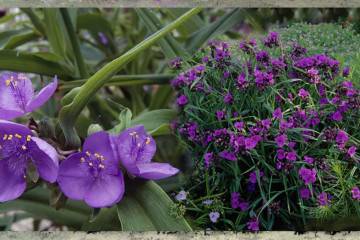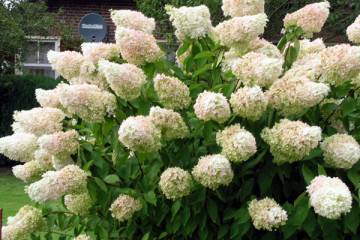Nasturtium planting and care in the open field
Content:
You can grow nasturtium in your summer cottage or in a flower pot on the balcony. The unpretentious flower loves the sun and survives in arid conditions. It is important to feed it and transplant it carefully, because the root system of a small shrub is very fragile.
Description of the plant
Nasturtium is a low-growing shrub that previously lived in warm countries. The plant is sensitive to low temperatures, therefore it is grown in Russia as an annual.
What family does it belong to
The flower belongs to the Nasturtium family, which has about 90 plant species. His homeland is Central and South America.
Nasturtium is a liana or miniature shrub. In a foreign representative of the family, shoots can reach a length of 3.5 m. In a large nasturtium, which is popular, the stems are straight or creeping. The flower is widely used in decorating summer cottages.
Origin story
Nasturtium in many countries symbolizes valor. Why the flower is associated with military honor and courage:
- leaves resemble shields;
- the bud looks like a helmet.
In Russia, the flower is also known as "capuchin".
In regions with warm winters, it is grown as a perennial. In the middle lane, the plant does not withstand severe frosts.
Care features
You can plant the capuchin as soon as the frost has passed. The plant dies even at freezing temperatures, so it is better to start planting at the end of May. In Siberia, the procedure should be carried out in June. It is better to plant already grown seedlings.
Growing from seeds
Propagating nasturtium by seed is easy. The main thing is to take into account that seedlings do not always appear, therefore it is recommended to lower a few seeds into the hole.
Time to board
When to plant nasturtium when grown from seed depends on the location chosen:
- if you plan to sow directly into open ground, then this should be done at the end of May. Long daylight hours will help plants grow faster and grow stronger;
- when sowing at home, you can start at any time, the main thing is to provide the seedlings with light.
Choice of capacity
Due to the weakness of the roots, it is better to grow nasturtiums in separate containers. Seed germination is not very high, it is recommended to put two pieces in a glass:
- In the soil to which sand and peat are added, depressions of about 2 cm are made.
- Planting material is placed inside.
- Slightly compact the ground.
- Moisten the soil with a spray bottle.
Soil and seed preparation
Before starting work, the seeds must be soaked.
Loose soil is suitable for nasturtium, before planting it is watered with hot water. This will speed up the emergence of seedlings and bring flowering closer. It is important that the soil contains sand, especially if it is of high density.
Care
Seedlings require sunlight and temperatures around 22-23 ° C. Without heat and sun, there is a chance that plants will not bloom.
Dive and transfer
Diving nasturtium is not desirable. It is recommended to do this only if absolutely necessary, in particular, when the shoots are pulled out strongly. Then, when transplanting, you need to take deep pots in order to plant young plants almost to the leaves. It is necessary to remove the flower from the container carefully, keeping the earthen lump. It is advised to use the transshipment method. When planting and caring for nasturtium, one should not forget about the fragility and fragility of the roots.
How to care for seedlings
The growth and flowering of the plant depend on the care of nasturtium seedlings. Therefore, you need to take care of young seedlings, provide them with light, fertilizers and periodically moisten the soil.
Highlights
When growing seedlings, you need to remember that plants will not get stronger without bright daylight. After transplanting into open ground, they will hurt, and you will have to forget about flowering for a while.
Temperature
In the first week, the seedlings should be warm. A temperature slightly above 20 ° C is quite comfortable for plants.
Watering
It is necessary to moisten the soil only when its top layer dries out. Waterlogging is detrimental to plants. Frequent watering is discouraged, especially if it rains from time to time.
Lighting
Seedlings need to be provided with sunlight:
- at home it is better to place it on the lightest window sill;
- in the country can be put in a greenhouse.
Flowering depends on where to plant nasturtium, in the shade or in the sun.
Top dressing
Fertilize seedlings two weeks after the appearance of the entrances. It is better to use phosphorus-potassium products. Top dressing, rich in nitrogen, will only help to increase the green mass. They do not strengthen the root system, they also do not contribute to the approach of the moment of flowering.
Picking
Given the fragility of nasturtium roots, you should try to avoid picking. If you cannot do without the procedure, you need to be careful.
Open ground transplant
Growing with seedlings will speed up bud formation. But do not rush to transplant young seedlings into the garden. It must be remembered that nasturtium loves warmth and is afraid of cold winds, and even more so frost.
Timing
You can move the flower outside when the weather is warm, the temperature will be above 5 ° C at night. Usually, the transplant is painless in June-July.
Picture 4. The buds will open 1.5 months after planting
rules
How to properly plant nasturtium:
- The hardened plants, together with the earthen clod, are removed from the pots. If peat cups were used, then they are planted with them.
- Maintain a distance between planted specimens of about 20-25 cm.
- They cover the flowers so that they do not suffer from strong winds and do not freeze at night.
Propagation by cuttings
Along with planting seeds, nasturtium is bred by harvesting cuttings. To do this, you need to remember that this is a perennial plant, which means that it can be dug up and transferred to the room before the onset of cold weather.
For which varieties is it suitable
Cuttings are used for terry hybrid varieties. If you want to save a plant that has appeared on the site, then collecting seeds will not help. The only way is to root the cuttings.
Breeding rules
To leave a hybrid plant until next season, you need to transplant it into a pot for the winter and take care of it at home. It is not necessary to feed it, it is enough to periodically moisten the soil so that it does not completely dry out. It is better to put nasturtium on a lighted windowsill.
Care for a mature plant
Nasturtium, the care and cultivation of which is not considered labor intensive, requires watering when the soil dries. If the soil is constantly wet, lush flowering will not work, but the foliage will be voluminous. In addition, excessive watering threatens root rot.
Top dressing
The flower must be fertilized with preparations containing potassium and phosphorus. They are used once a week before the nasturtium blooms.
Pinching
Experienced gardeners believe that nasturtium does not need to be pinched. Sometimes the procedure is performed to correct the growth of the flower. Strongly overgrown specimens are also pinched.
Pruning
Capuchin will grow better if wilted buds, extra leaves, damaged stems are removed in a timely manner. The flower will not waste energy on their restoration, but will let them in on the development of young shoots.
Seed collection
As soon as the flowers wither, they are plucked. If you want to collect seeds, you will have to save a few ovaries. In mid-autumn, the green seeds will begin to turn yellow. You need to collect them in time, before they crumble.
Disease and pest control
Nasturtium, the cultivation of which does not take much time and effort, can get sick. The flower can be destroyed by gray rot, rust, mosaic. In order not to damage healthy plants, the affected ones must be removed, it is better to burn them outside the garden. The remaining flowers must be treated with drugs that can destroy pathogens.
Caterpillars, bugs and midges can overcome nasturtium. It is necessary to fight with them, otherwise they will suck out all the juices from the plant, and it will die.
In order for bright nasturtium to please the eye in the garden, planting and care in the open field should be carried out taking into account all the recommendations. Then miniature bushes will decorate flower beds, lawns in the garden. Nasturtium is actively used in landscape design, it is combined with other plants. Abundant flowering is characteristic of a healthy shrub growing in loose soil rich in potassium and phosphorus.
It is important to water the nasturtium in a timely manner, to ensure that it is in the sun. You can also grow it on the balcony, the main thing is to put the pot on a lighted windowsill. Climbing plants, for example, terry nasturtium, are especially suitable for decorating loggias. It also looks impressive on the walls of gazebos and verandas.


















